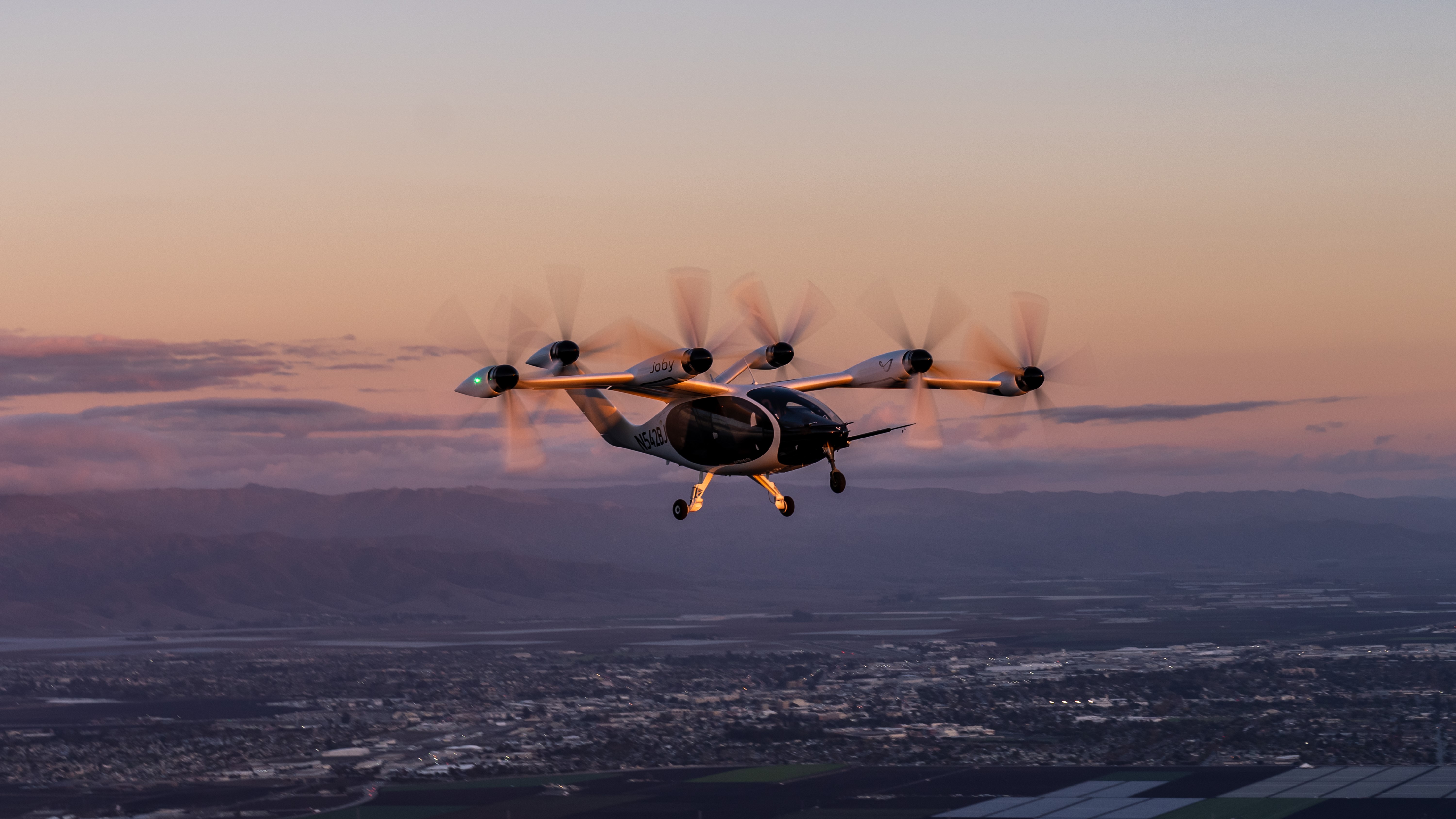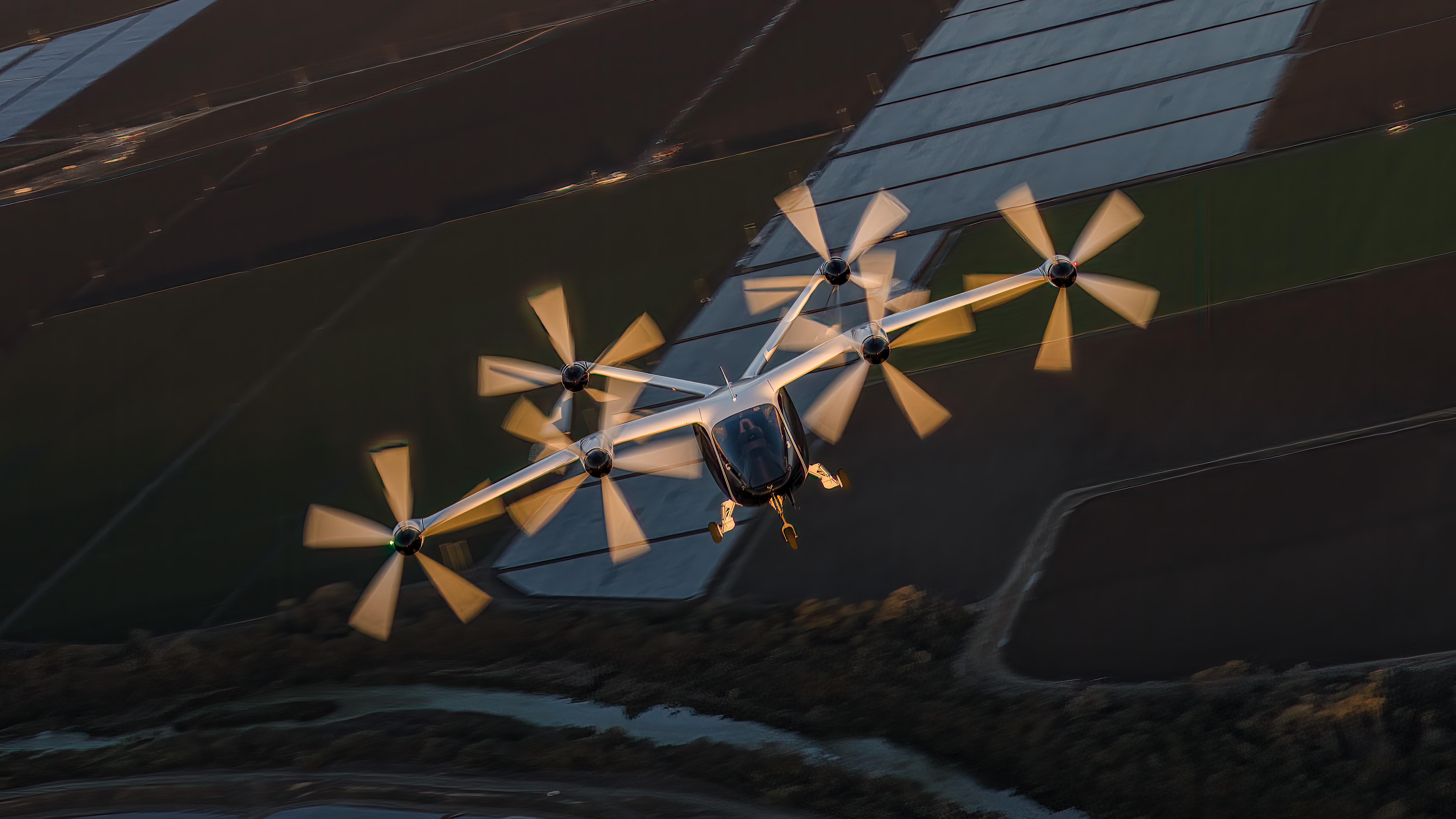Hydrogen-powered VTOL aircraft makes record 523-mile journey — and lands with 10% of its fuel left in the tank
An air taxi has completed the first forward flight of a hydrogen-fueled aircraft capable of vertical takeoff and landing — and it broke a distance record in the process.

A hydrogen-electric air taxi has completed a record-breaking, 523-mile (842 kilometers) flight over California, producing only water as a direct by-product.
The flight, which was three times further than the distance records set by electric vehicles of the same developer, "demonstrates the potential for hydrogen to unlock emissions-free, regional journeys," according to a statement from Joby Aviation, the company behind the air taxi prototype. The air taxi had 10% of its hydrogen fuel load remaining after the flight, meaning it could fly even longer in the future.
The flight took place June 24 and is the first ever forward flight of a hydrogen-fueled aircraft capable of vertical takeoff and landing (VTOL), according to Joby Aviation. Previous hydrogen-fueled flights used either airplane-like aircraft requiring a runway or smaller vehicles, such as Metavista's unmanned multi-rotor design. Those hydrogen-fueled airplane flights lasted between 10 minutes and 3 hours, in the case of a H2FLY design (H2FLY is a Joby Aviation subsidiary). Metavista's vehicle flew for a record 12 hours. It's unclear what distance these aircraft covered, but H2FLY said its airplane could one day fly up to 930 miles (1,500 km).
Joby Aviation's air taxi is a modified electric aircraft with six rotors that can be used in urban settings. The original battery-operated vehicle completed 25,000 miles (40,000 km) of testing across many flights at the company's base in Marina, California and over New York City. Engineers then converted this battery-electric aircraft into a hydrogen-electric one by adding a fuel tank capable of storing 88 pounds (40 kilograms) of liquid hydrogen, as well as a hydrogen fuel cell system, according to the statement.
Related: Largest ever fully electric concept plane could take to the skies by 2033
The fuel cells convert hydrogen into electricity, water and heat in the presence of oxygen. The electricity then powers the aircraft's rotors, according to the statement, while the water is released as a waste product. The aircraft also carries a reduced number of batteries at all times, providing extra power during takeoff and landing.
"Imagine being able to fly from San Francisco to San Diego, Boston to Baltimore, or Nashville to New Orleans without the need to go to an airport and with no emissions except water," JoeBen Bevirt, the founder and CEO of Joby Aviation, said in the statement.
Sign up for the Live Science daily newsletter now
Get the world’s most fascinating discoveries delivered straight to your inbox.

The advantage of the hydrogen-powered design is that it can go much further than the battery-electric one, which needs recharging every 100 to 150 miles (160 to 240 km).
Joby Aviation plans to start selling its original battery-electric design in 2025. The hydrogen-electric air taxi will take longer to bring to market, but "the vast majority of the design, testing and certification work we've completed on our battery-electric aircraft carries over to commercializing hydrogen-electric flight," Bevirt said.
Joby Aviation recently became the first developer of electric VTOL aircraft to complete the third of five stages of the Federal Aviation Administration (FAA) type certification process. During this third stage, the FAA reviewed and approved Joby's certification plans for its aircraft's structural, mechanical and electrical systems. The next stage will involve the FAA looking at the entire aircraft and all its systems.
Joby Aviation plans to roll out the same infrastructure, landing pads, operations team and software for both types of vehicles, according to the statement, making it possible to use them simultaneously or transition seamlessly from one to the other.

Sascha is a U.K.-based staff writer at Live Science. She holds a bachelor’s degree in biology from the University of Southampton in England and a master’s degree in science communication from Imperial College London. Her work has appeared in The Guardian and the health website Zoe. Besides writing, she enjoys playing tennis, bread-making and browsing second-hand shops for hidden gems.









